You can make your own Thai-style fermented sriracha chili sauce at home with 5 simple ingredients. Balancing spiciness, sweetness, saltiness, and tanginess – this sauce is 10x tastier than the store-bought version.
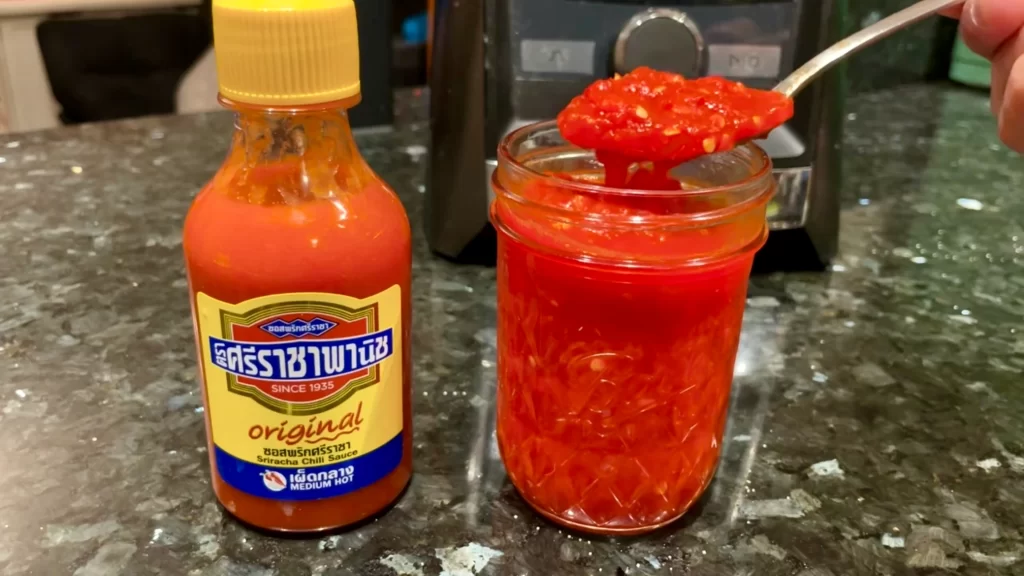
Why This Recipe Works
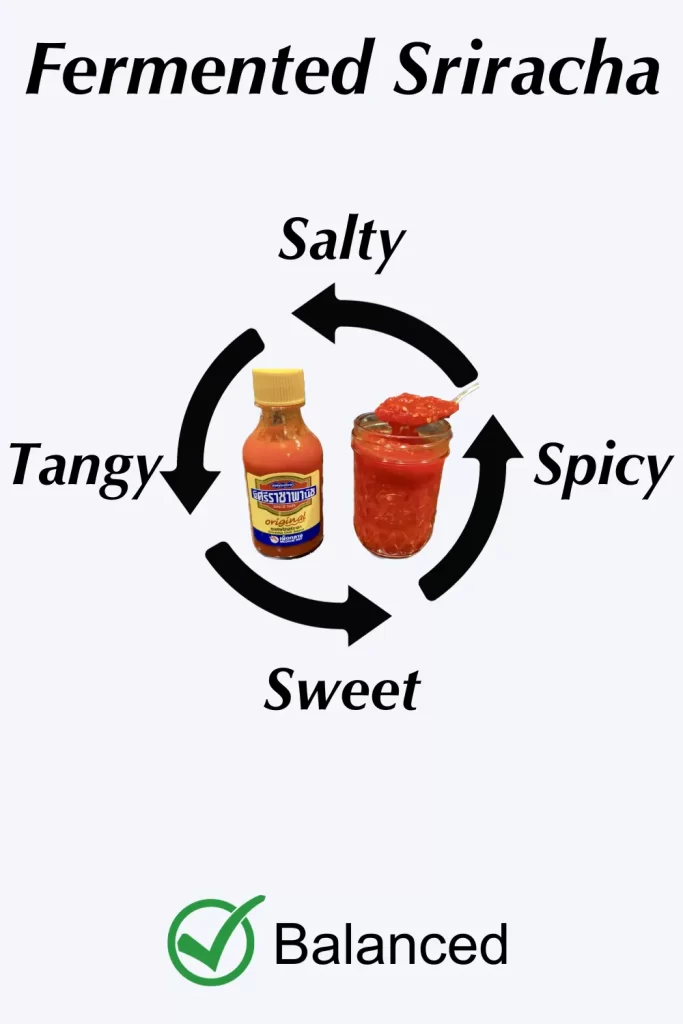
As opposed to the popular American brand of sriracha sauce, this recipe imitates the original Thai version of fermented sriracha sauce which harmonizes spicy elements (chilis), sweet elements (sugar), salty elements (salt), and tangy elements (vinegar and fermentation). The result is a perfectly balanced chili sauce that can accompany almost any meal.
Ingredients You’ll Need
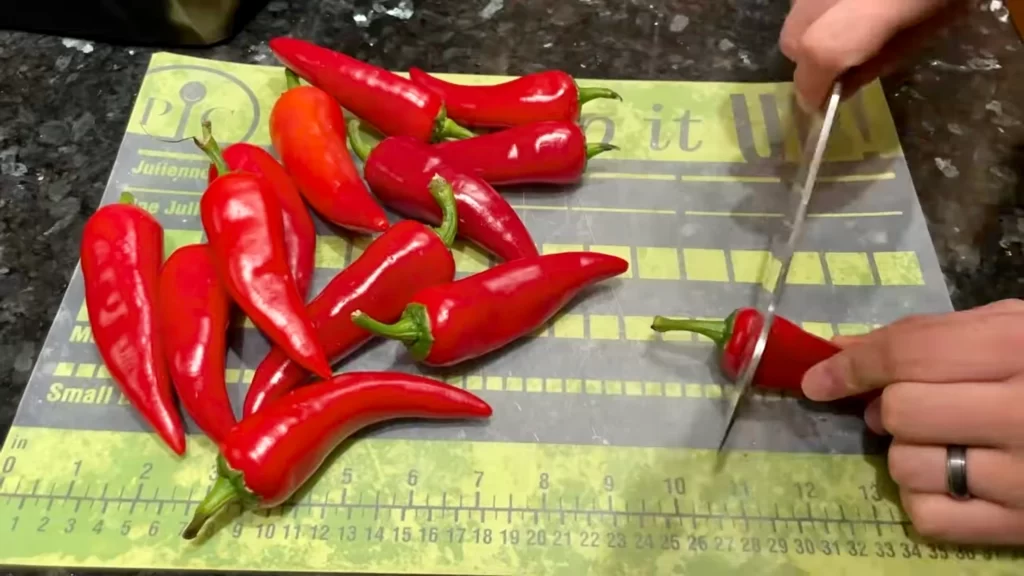
- Fresno Chile Peppers: These add the heat! You can also use red jalapeños since they have nearly the same level of spiciness.
- Fresh Garlic: This adds funkiness and umami. Peeled, fresh garlic cloves are best for making fermented sriracha. Any form of dried garlic or garlic powder won’t work as well in a dish like this where you want to maximize freshness.
- Salt: This obviously brings the saltiness to the sauce. For this recipe, I use Morton brand kosher salt, but sea salt or table salt will work fine for this recipe as well.
- White Sugar: Sugar balances the sweetness of this sauce. You can use palm sugar or brown sugar as an alternative to white. You can also use honey, but I recommend adding it to the sauce after the fermentation period before blending. Check the notes on substitutions below for more information.
- Vinegar: In addition to the fermentation, vinegar adds to the acidity and tanginess of this sauce. I recommend using unsweetened rice vinegar for its naturally sweet flavor that pairs well with Asian dishes.
Note: Check recipe card below for full ingredient amounts and quantities.
Substitutions and Additions
- Use red jalapeños instead of Fresno chili peppers: Red jalapeño peppers have about the same level of spiciness and are used in the famous Rooster brand of sriracha sauce made in the US. They are a common garden and grocery staple in the US so you can definitely use red jalapeños.
- Omit the sugar for a hotter, sugar-free sauce: You can leave out the sugar from this recipe altogether if you choose to do so. The resulting sauce will be less sweet and therefore a little bit spicier, but it’s a great option if you’re avoiding sugar. While the original Sriraja Panich brand of sriracha sauce does contain sugar in its bottled product, it’s unclear from this interview if sugar was actually a part of the original recipe. Long story short, feel free to leave out the sugar! Don’t try to replace white sugar with another sweetener. The molasses in brown sugar will throw off the flavor and the anti-microbial properties in honey may affect the fermentation. Stick with white sugar or leave the sweetener out altogether.
- Sweeten with a different type of sugar: You can use brown sugar or palm sugar as a 1:1 replacement for white sugar in this recipe. The molasses in the brown sugar will provide a stronger flavor and palm sugar will be a little milder.
- Sweeten with honey instead of sugar: If you want to sweeten fermented sriracha with honey, wait to add it until after the fermentation period. Honey has antimicrobial properties which may potentially affect the fermentation process. After fermentation, add a few tablespoons of honey to the sriracha before blending it to add some sweetness.
- Use white distilled vinegar instead of rice vinegar: Rice vinegar is preferred for its mild sweetness and its use in Asian dishes, but you can definitely finish this sauce with white distilled vinegar in a pinch. You want an acidic punch from the vinegar but no additional flavor. Avoid strongly flavored vinegars, like red wine vinegar or balsamic vinegar. These would be completely out of place in fermented sriracha.
Ingredient Amounts
- Fresno Chili Peppers or Red Jalapeños – 1 lb.
- Garlic, fresh – 8 Cloves
- Rice Vinegar – 3 Tbsp
- White Sugar – 1 Tbsp for before fermentation (plus 1 1/2 Tbsp reserved for after fermentation)
- Salt – 1/2 Tbsp
Equipment Needed
- Glass Jar with a Lid
- Spoon or Spatula
- Chef’s Knife
- High Speed Blender (affiliate link to the blender I use)
- Fine Mesh Strainer, Optional
Step-by-Step Instructions
Getting Started (Day 1)
- Prepare the chili peppers by removing the stems, seeds, and ribs. Place the prepared chili peppers into the base of a high speed blender.
Note: You can keep as many ribs and seeds in with the peppers as you want. Removing the ribs at the beginning will tone down the spiciness of the sauce in the end, and removing the seeds at the beginning is an easy way to give the final sauce a smoother texture as you won’t need to strain them out later.
- Peel the papery husks off of the garlic cloves and place the garlic in the base of the blender as well. There’s no need to chop the garlic as the blender will process it completely.
- Add the salt and the initial amount of sugar to the blender. Blend the entire mixture for 2-3 minutes on a medium to high speed. You want to extract as much liquid as possible from the peppers as the liquid will help start the sriracha fermentation process.
- Transfer the fully blended chili mixture into a glass jar and press the solids down under the liquid. The lacto-fermentation process requires submerging the peppers under liquid, which is fairly easy for sriracha because the blended peppers provide their own liquid.
- Close the lid loosely, allowing some air to escape, and let the mixture sit on the counter at room temperature for 5-6 days to ferment.
Fermentation (Days 2-6)
- Stir the chili pepper mixture once every 24 hours. You’ll notice more and more bubbles forming in the sauce each day. These bubbles are a result of fermentation, similar to what you would see in kimchi or sauerkraut.
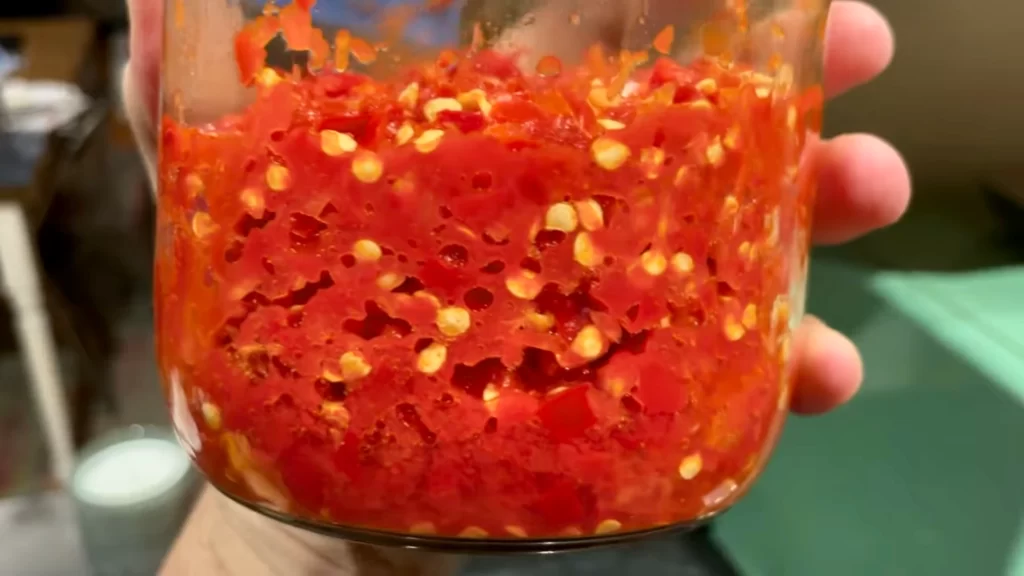
- Around day 6 or 7 the sauce will start breaking down and releasing more liquid. This is when I stop the fermentation process and move on to the blending stage. If desired, you can keep fermenting the chili pepper mixture for up to a month to achieve a more fermented flavor.
Blending and Finishing (Day 7)
- Add the sugar that is reserved for after fermentation to the sriracha jar along with the rice vinegar.
- Stir the ingredients together and transfer to the base of a high speed blender.
- Blend on medium to high speed for 2-3 minutes, or until it reaches your desired level of smoothness.
Note: I prefer a chunkier homemade sriracha sauce. It’s no-waste, and I like to scoop it onto my food. To achieve an even smoother fermented sriracha sauce, pass the blended sauce through a fine mesh strainer and funnel it back into the jar. Repeat as necessary to remove any seeds and solids from the sauce.
- Transfer the sriracha sauce into a jar or bottle and store it in the refrigerator. Now you can use it whenever you want, spooning it onto eggs, fish, meat, vegetables, or rice dishes. Enjoy.
FAQs about this 5-Ingredient Fermented Sriracha Recipe
Yes, you can skip the vinegar in the final step if you don’t want to add it, however, the sriracha will end up being thicker and less tangy.
If you want to sweeten fermented sriracha with honey, wait to add it until after the fermentation period. Honey has antimicrobial properties which may potentially affect the fermentation process. After fermentation, add a few tablespoons of honey to the sriracha before blending it to add some sweetness.
This fermented sriracha sauce can last from 3-12 months in the fridge. I’ve kept my jar in the fridge for over a year and it still tasted great. The cold temperature in the fridge slows down the fermentation process and the sauce may even taste better to you over time.
You can cook the fermented sriracha sauce if you desire; this is an easy way to make a smooth sauce thicker, but cooking will kill the live and active cultures present in the sauce. To cook, transfer the fermented chili pepper mixture to a pot with the vinegar and sugar. Stir it together and bring it to a boil over medium heat. Switch to low heat and simmer the sauce for 5-10 minutes, or until the sauce thickens.
To make fermented sriracha sauce, you can use red jalapeños (typical in commercial sauces), green jalapeños (these will obviously make the sauce green instead of red), Fresno chilis (spicier than red jalapeños), or Thai birds eye chilis (even spicier; mix with another type of chili to reduce the spice).
5-Ingredient Fermented Sriracha
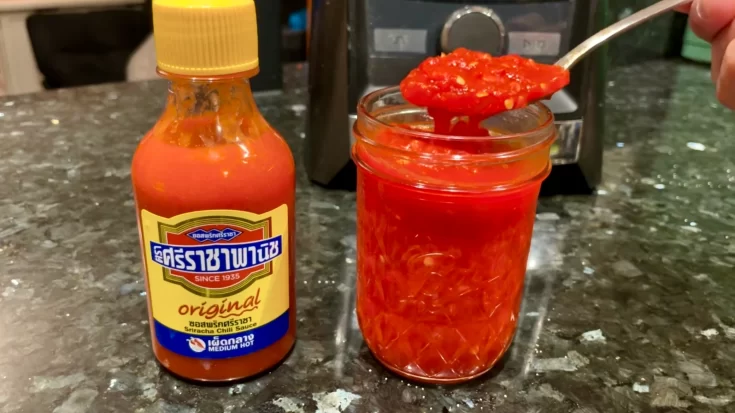
Make your own Thai-style fermented sriracha chili sauce at home with 5 simple ingredients. Balancing spiciness, sweetness, saltiness, and funkiness - this sauce is 10x tastier than the store-bought version.
Ingredients
- Fresno Chili Peppers or Red Jalapeños - 1 lb.
- Garlic Cloves, Fresh - 8 cloves
- Sugar - 1 Tbsp for before fermentation (plus 1 1/2 Tbsp reserved for after fermentation)
- Salt - 1/2 Tbsp
- Rice Vinegar - 3 Tbsp
Instructions
Getting Started (Day 1)
- Prepare the chili peppers by removing the stems, seeds, and ribs. Place the prepared chili peppers into the base of a high speed blender.
Note: You can keep as many ribs and seeds in with the peppers as you want. Removing the ribs at the beginning will tone down the spiciness of the sauce in the end, and removing the seeds at the beginning is an easy way to give the final sauce a smoother texture as you won’t need to strain them out later.
- Peel the papery husks off of the garlic cloves and place the garlic in the base of the blender as well. There’s no need to chop the garlic as the blender will process it completely.
- Add the salt and the initial amount of sugar to the blender. Blend the entire mixture for 2-3 minutes on a medium to high speed. You want to extract as much liquid as possible from the peppers as the liquid will help start the sriracha fermentation process.
- Transfer the fully blended chili mixture into a glass jar and press the solids down under the liquid. The lacto-fermentation process requires submerging the peppers under liquid, which is fairly easy for sriracha because the blended peppers provide their own liquid.
- Close the lid loosely, allowing some air to escape, and let the mixture sit on the counter at room temperature for 5-6 days to ferment.
Fermentation (Days 2-6)
- Stir the chili pepper mixture once every 24 hours. You’ll notice more and more bubbles forming in the sauce each day. These bubbles are a result of fermentation, similar to what you would see in kimchi or sauerkraut.
- Around day 6 or 7 the sauce will start breaking down and releasing more liquid. This is when I stop the fermentation process and move on to the blending stage. If desired, you can keep fermenting the chili pepper mixture for up to a month to achieve a more fermented flavor.
Blending and Finishing (Day 7)
- Add the sugar that is reserved for after fermentation to the sriracha jar along with the rice vinegar.
- Stir the ingredients together and transfer to the base of a high speed blender.
Blend on medium to high speed for 2-3 minutes, or until it reaches your desired level of smoothness.
Note: I prefer a chunkier homemade sriracha sauce. It’s no-waste, and I like to scoop it onto my food. To achieve an even smoother fermented sriracha sauce, pass the blended sauce through a fine mesh strainer and funnel it back into the jar. Repeat as necessary to remove any seeds and solids from the sauce.
- Transfer the sriracha sauce into a jar or bottle and store it in the refrigerator. Now you can use it whenever you want, spooning it onto eggs, fish, meat, vegetables, or rice dishes. Enjoy.
Notes
- You can keep as many ribs and seeds in with the peppers as you want. Removing the ribs at the beginning will tone down the spiciness of the sauce in the end, and removing the seeds at the beginning is an easy way to give the final sauce a smoother texture as you won’t need to strain them out later.
- I don't strain my fermented sriracha, because I prefer a chunkier homemade sauce. It’s no-waste, and I like to scoop it onto my food. To achieve an even smoother fermented sriracha sauce, pass the blended sauce through a fine mesh strainer and funnel it back into the jar. Repeat as necessary to remove any seeds and solids from the sauce.
